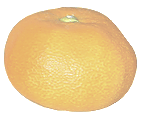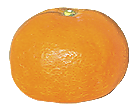Uchi roles in a soto situation
Okaasan is not always in the role of indulger (amayakasu). Rosenberger also contrasts the interactions of the same otoosan and okaasan in the situation above when they are at a soto situation (a wedding), where their roles are reversed. Otoosan is now the one managing the situation (amayakasu), while she is being dependent (amaeru).
[He leads] the way in greeting others. She followed. He appeared to know the correct protocol about shoes, coats and hats, and she conformed, showing small signs of embarassment (hand over mouth, bent head, slight smile) when she made some small mistakes. He made a formal speech of congratulations in skillful rhetoric and she a short, rather emotional speech in much less polite phrasing and grammar. . . .The indulgence of the mother by the father at the wedding represents the proper status of the head male of the group in relation to the wife, and thus of the group itself in relation to other groups.
In a visit some years later to the same household Rosenberger reported that in the interim the otoosan had died, and a son-in-law had been adopted into the household through marriage to the daughter. The okaasan now had authority over the younger son-in-law. On informal evenings, he usually could not relax to the extent of stretching out on the tatami, and he did small favors for the mother-in-law such as handing her the newspaper or her glasses. Thus, to some extent, he was taking the soto role of the indulger, while she was taking the uchi role of the one being indulged, in a relationship that mirrors her indulgence of the otoosan in the example above.
To summarize these perspectives, it is crucial to begin to see uchi, not as a collection of individuals, but as a variety of two-person relationships (indulging and being indulged) whose roles can shift according to context. The relationships are anchored in uchi, so they include a perspective beyond the individual. If we view okaasan in the first example only from the vantagepoint of the individual “I” anchor, we might see her as subordinate, in a servant-like role, trapped in constant tension. Yet while tension and subordination do exist in this situation for her, something also exists beyond this. The okaasan’s efforts to “indulge” others within uchi contributes to the general climate and well-being of “uchi- as-a-whole”, and the recognition of this by the other members makes her much more than a second-class citizen. This gives a deeper meaning to her actions as well. She should be viewed as a “homemaker”, rather than a housewife.
The homestay guest also needs to become aware of the uchi/soto dynamics that are happening within the context of uchi. For example, notice the similarity between okaasan’s indulging of otoosan in Rosenberger’s case and the okaasan’s indulgence of the homestay guest in Peter’s case. (This happens in the cases of the homestay students you will meet in Part 3 as well.) Notice also the dynamics in soto situations, in which otoosan and okaasan indulge the student guest when they show him the sights, or take him out to dinner; managing the situation while he is dependent on them. You can also assess the possibilities for shifting the dynamics in your homestay situation. Shifting your own role from amaeru (being indulged) to amayakasu (being the indulger) is one way of producing a change in one’s position within the family. But what possibilities are there of the homestay guest shifting the dynamics of “being indulged” in the homestay?
In Part 3 you will see that these shifts of dynamics can become real possibilities, when carried out in coordination with the host family. Another way of putting this is to say that learning to shift from the role of amaeru to amayakasu appears to be part of the same process by which the “cultural child” begins to “grow up”. The movement from a distant soto guest closer toward the uchi members is part of this process too.

















